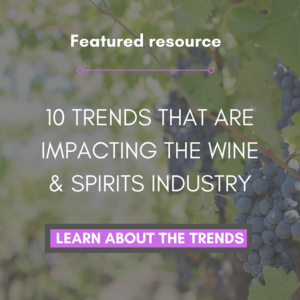When you think of a winery, you might envision acres of rolling green hills filled with rows upon rows of grape vines.
But as more millennials choose to live in cities long-term, wineries are now opening in old warehouses and small blacktop spaces. Known as urban wineries, they are attracting city dwellers and even tourists to come drink their wine. Urban wineries use grapes from any number of different off-site vineyards.
Around 2000 the first Urban wineries started to open, despite rising rent costs, because of customer demand for ambiance and good wine — without having to travel to wine country. The main difference between more rural vineyards in traditional wine-country regions and the urban wineries, is that the grapes are grown and the wine is made off-site.
Wine and the City
Successful urban wineries are popping up across the US. In Seattle, a new 32,000 square-foot urban winery called Jet City drew 1,500 people on opening night. The winery makes its wine with grapes from 12 different Washington vineyards.
“It was intermingled, all levels of Seattle,” Charles Smith, winemaker at Jet City, told Wine Spectator. “It’s the first time I’ve seen that since I was here in the ’80s. We had five food trucks, two bands, and I opened 100 library wines. It was raucous.”
Urban wineries are even making New York City a destination for wine lovers. The company City Winery has locations across seven U.S. cities from New York, Philadelphia, Chicago, to Atlanta. In Brooklyn, NY, Red Hook Winery and Brooklyn Winery offers urban and trendy tasting rooms and wines served with grapes that hail from Upstate New York.
 “Wrangling full semi-trucks to offload 20-plus tons of grapes in the middle of morning rush hour in New York City is not for the faint of heart,” Conor McCormack, head winemaker at Brooklyn Winery in New York and District Winery in Washington DC told Food and Wine. “But we make it work.”
“Wrangling full semi-trucks to offload 20-plus tons of grapes in the middle of morning rush hour in New York City is not for the faint of heart,” Conor McCormack, head winemaker at Brooklyn Winery in New York and District Winery in Washington DC told Food and Wine. “But we make it work.”
Because of their urban location, most can’t grow grapes on site. In states like New York, this helps give upstate vineyards more business. New York State grape and wine production have grown by 50% since 1985.
Some urban wineries can now showcase grapes from over a dozen different vineyards. For example, in Ohio 265 wineries had a total economic impact of $1.3 billion in 2016, according to the most recent data from the Ohio Grape Industries Committee, which issues a report about every four years. This is a 65% increase from the economic impact of $786 million in 2012.
It’s not just the United States that has a growing urban winery scene. When tourists head to the Eiffel Tower, it used to be just to take pretty pictures. Now, it can be for a glass of wine at the newest urban winery inside the treasured landmark.
The winery, known as Winerie Parisienne on the Eiffel Tower, has a setup of vats and barrels on a deck 187 feet up above the 7th Arrondissement. The Winerie will release 1,800 bottles later this year.
How vineyards and brands can take advantage of urban wineries
Whether your vineyard or brand is big or small, partnering with an urban winery can be a way to showcase your grapes and brand.
Most of the urban wineries mention the location or brand that the grapes originated from on their menu, allowing customers to learn more about their favorite wines.
Rural vineyards with excess space may also take the opportunity to rent out to city-based wineries that need the extra room to make their wines.
While traditional wineries are here to stay, urban wineries are more accessible to the masses of city-dwellers who want to experience new grapes and regions without traveling to wine country.
- 87% of Utilities Have Experienced at Least One Data Breach in Last Three Years - February 5, 2024
- Can Drones Lower Your Next Utility Bill? - January 10, 2024
- Onshore Wind Farms Are The Next Big Thing In Renewable Energy - December 6, 2023




